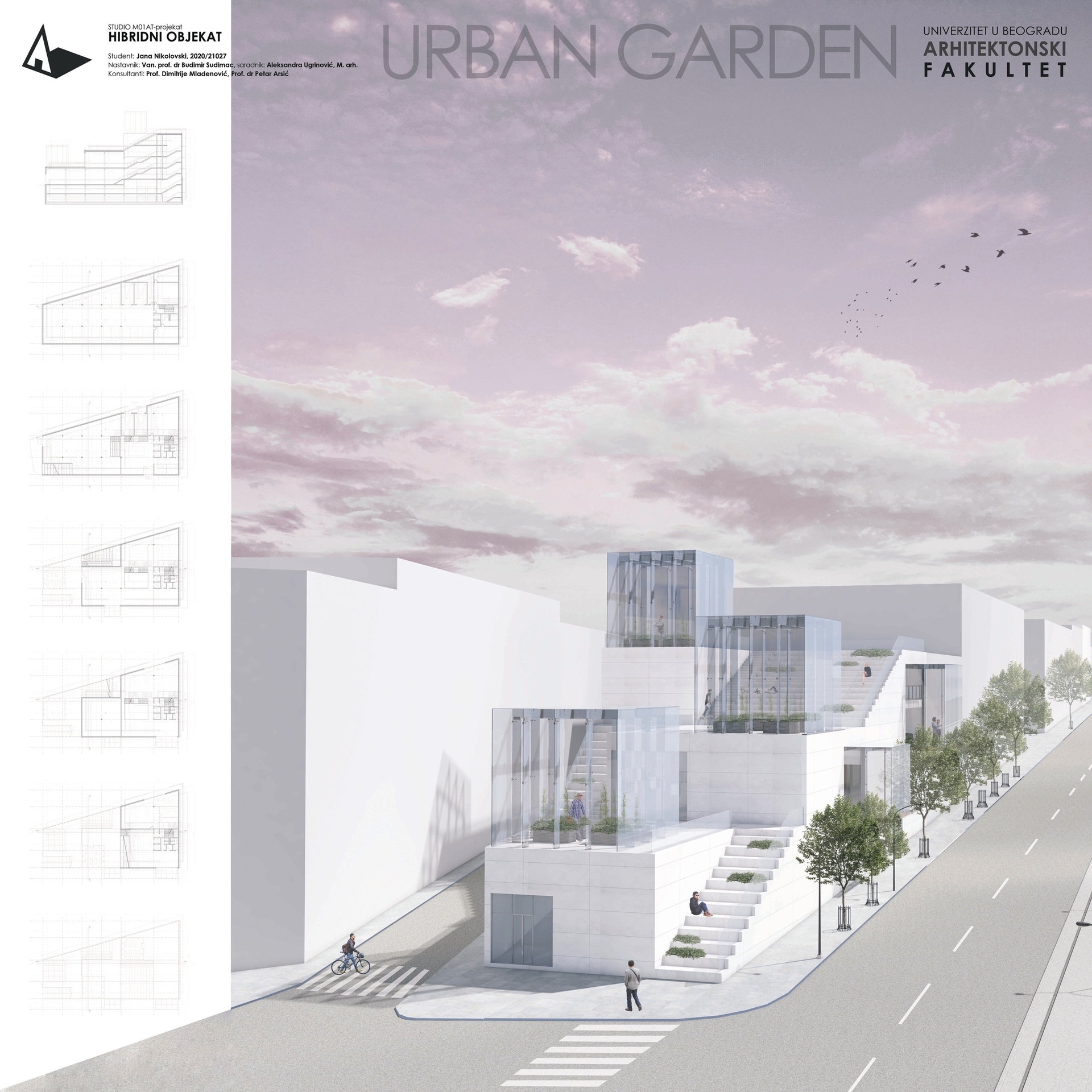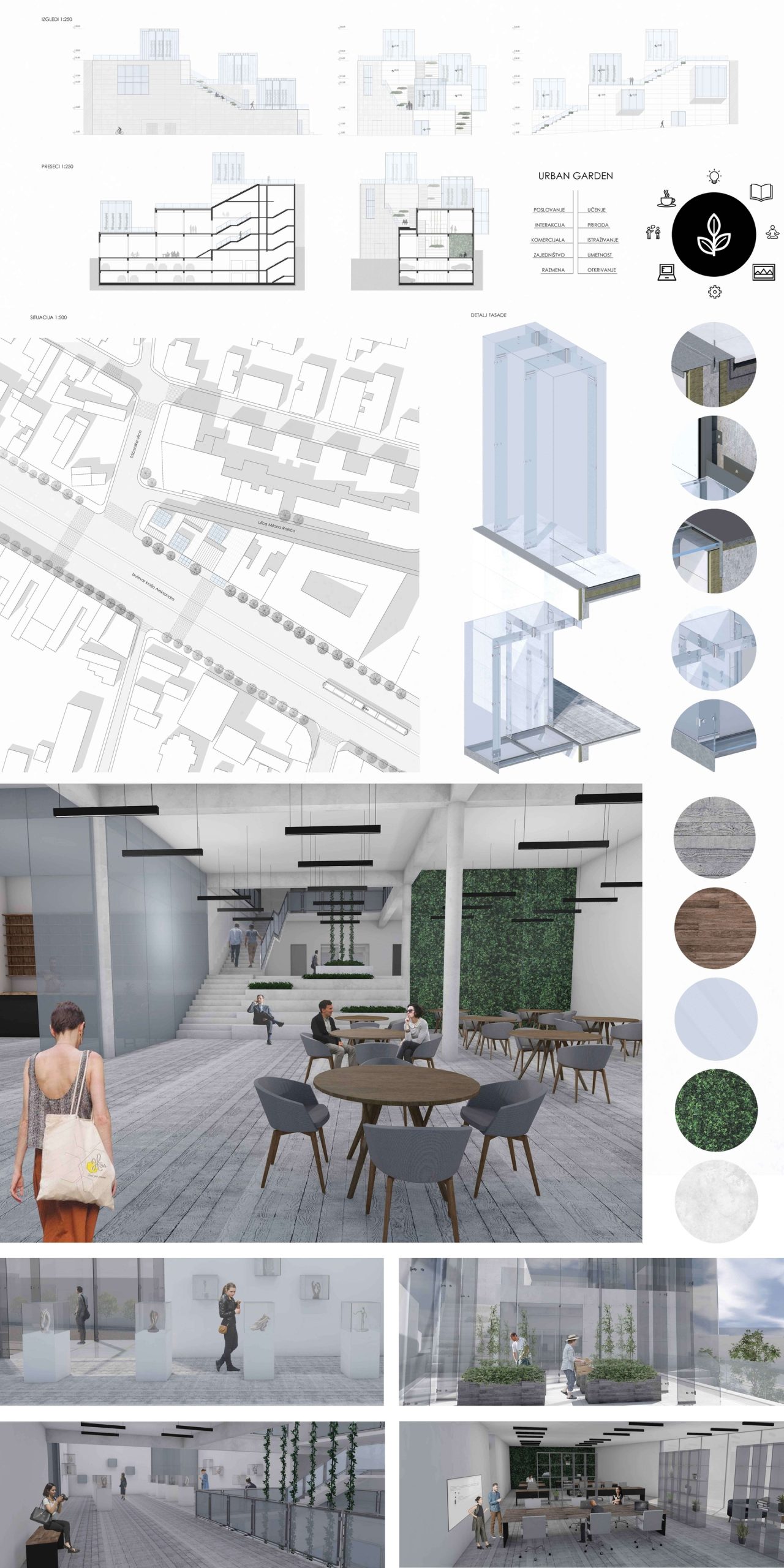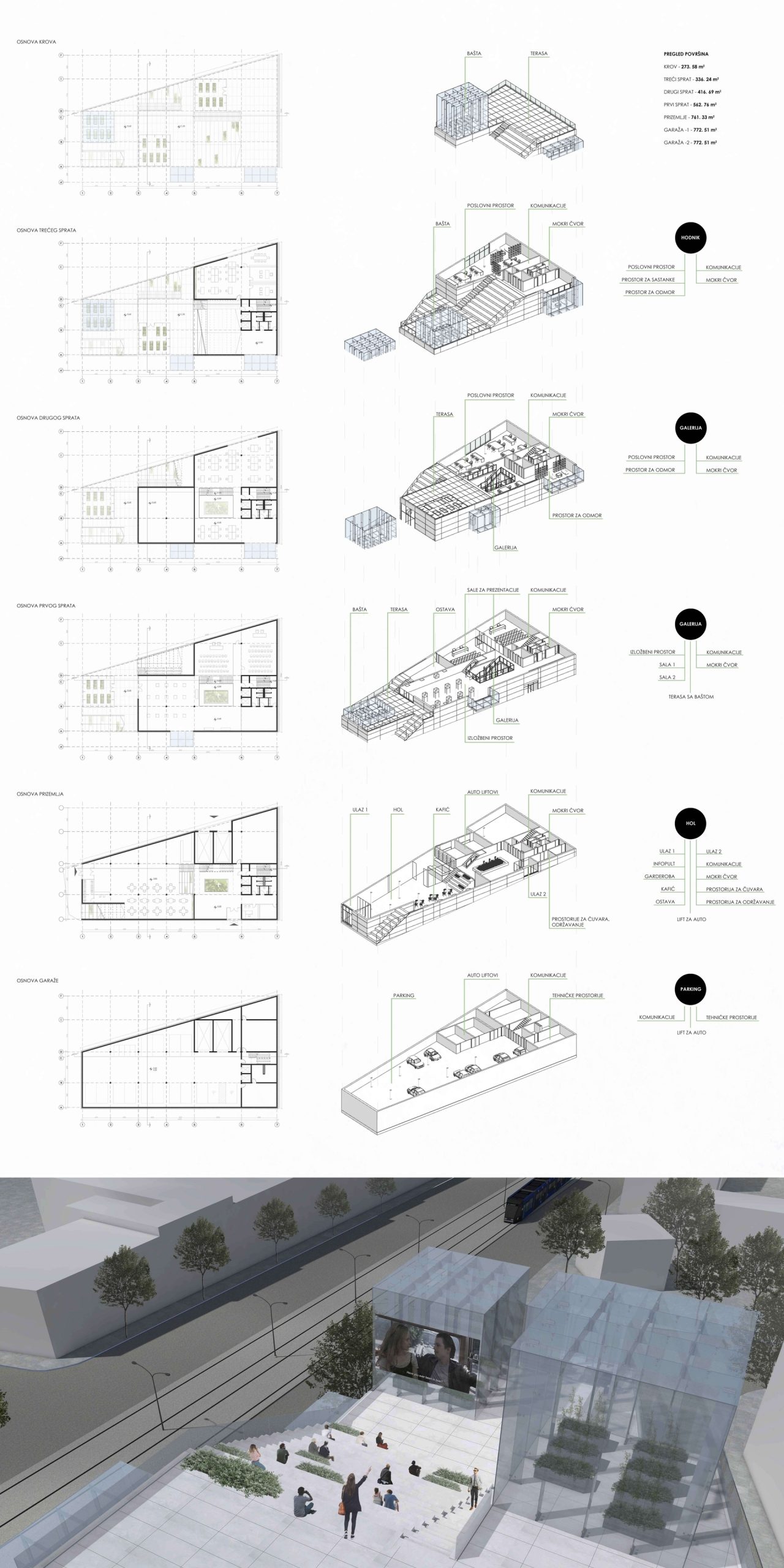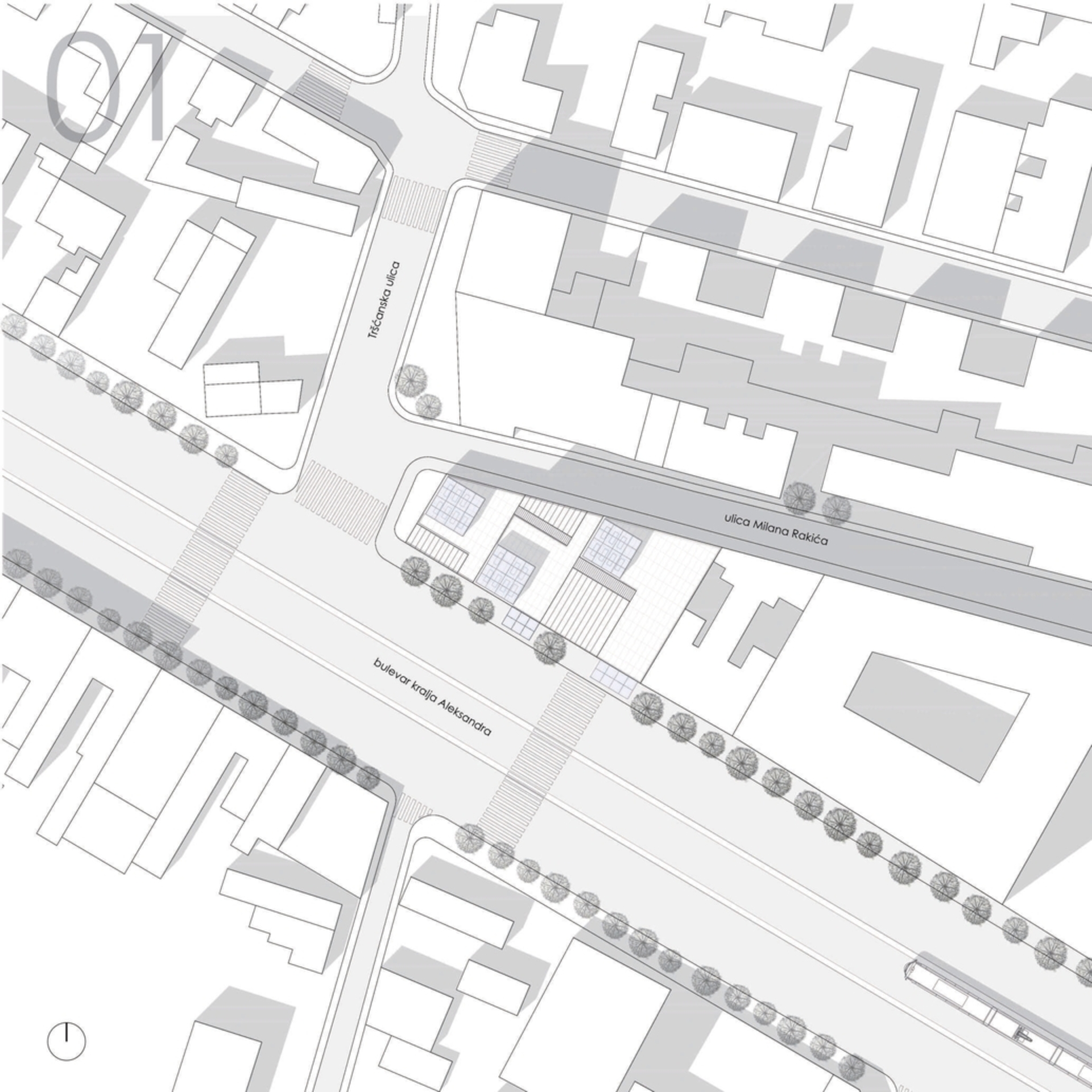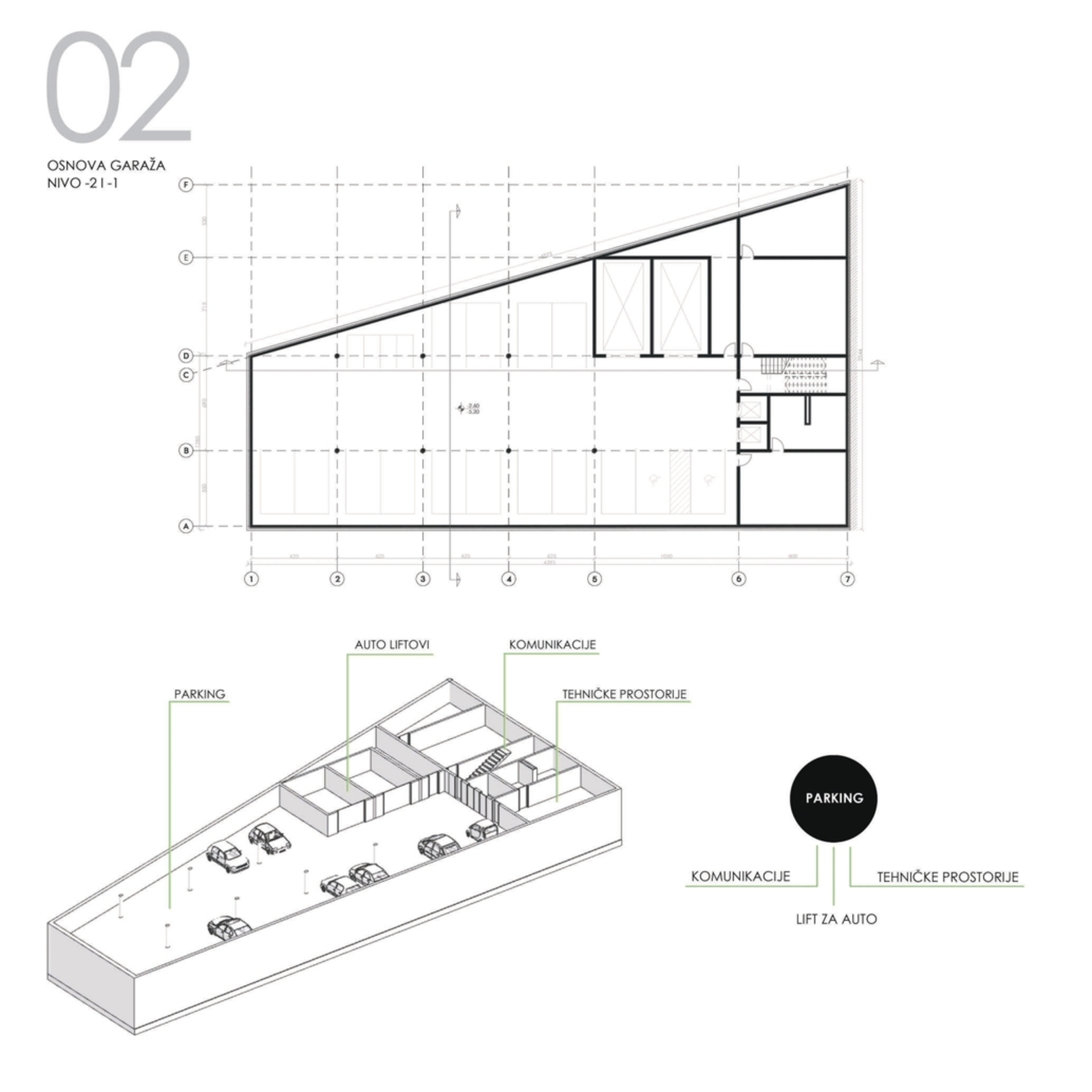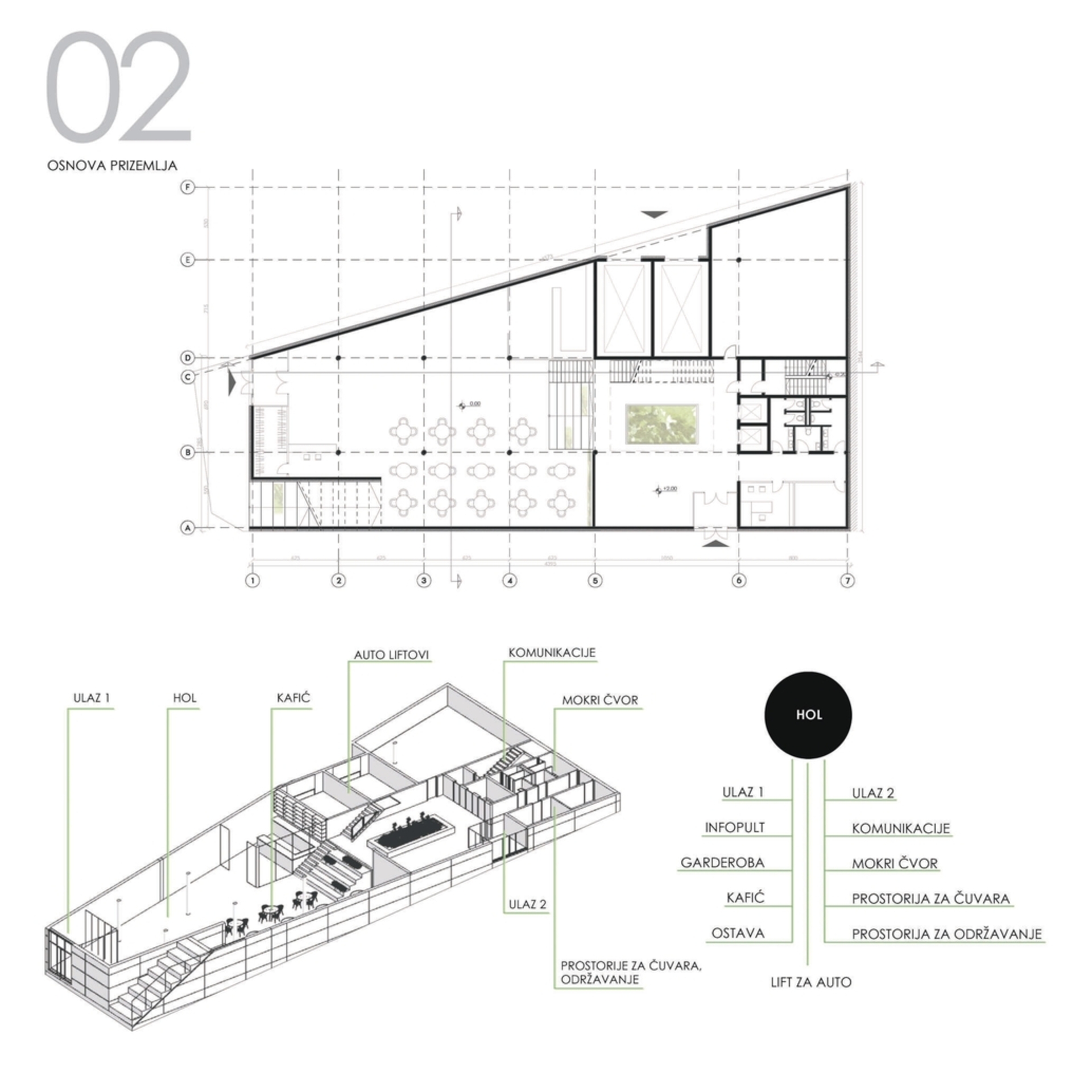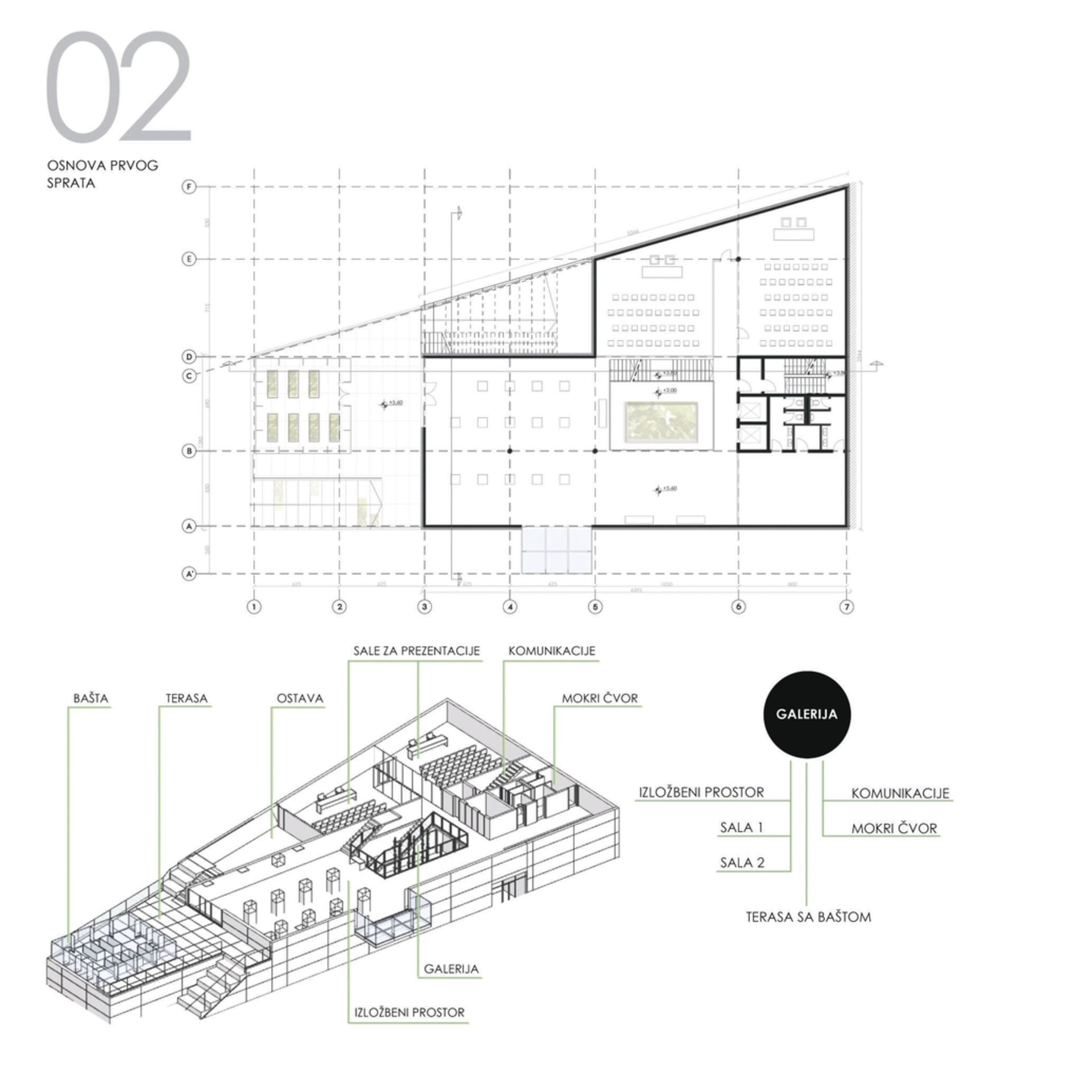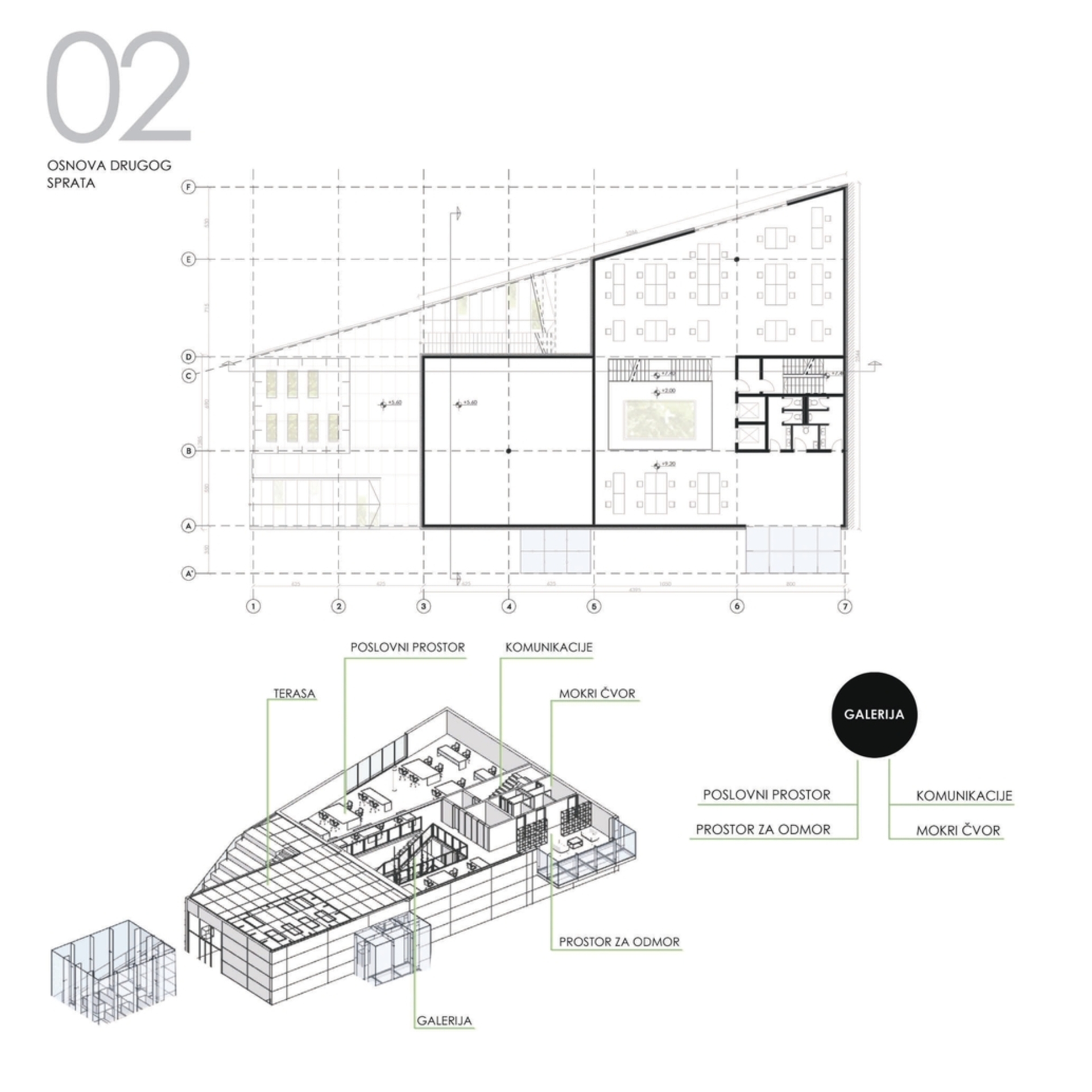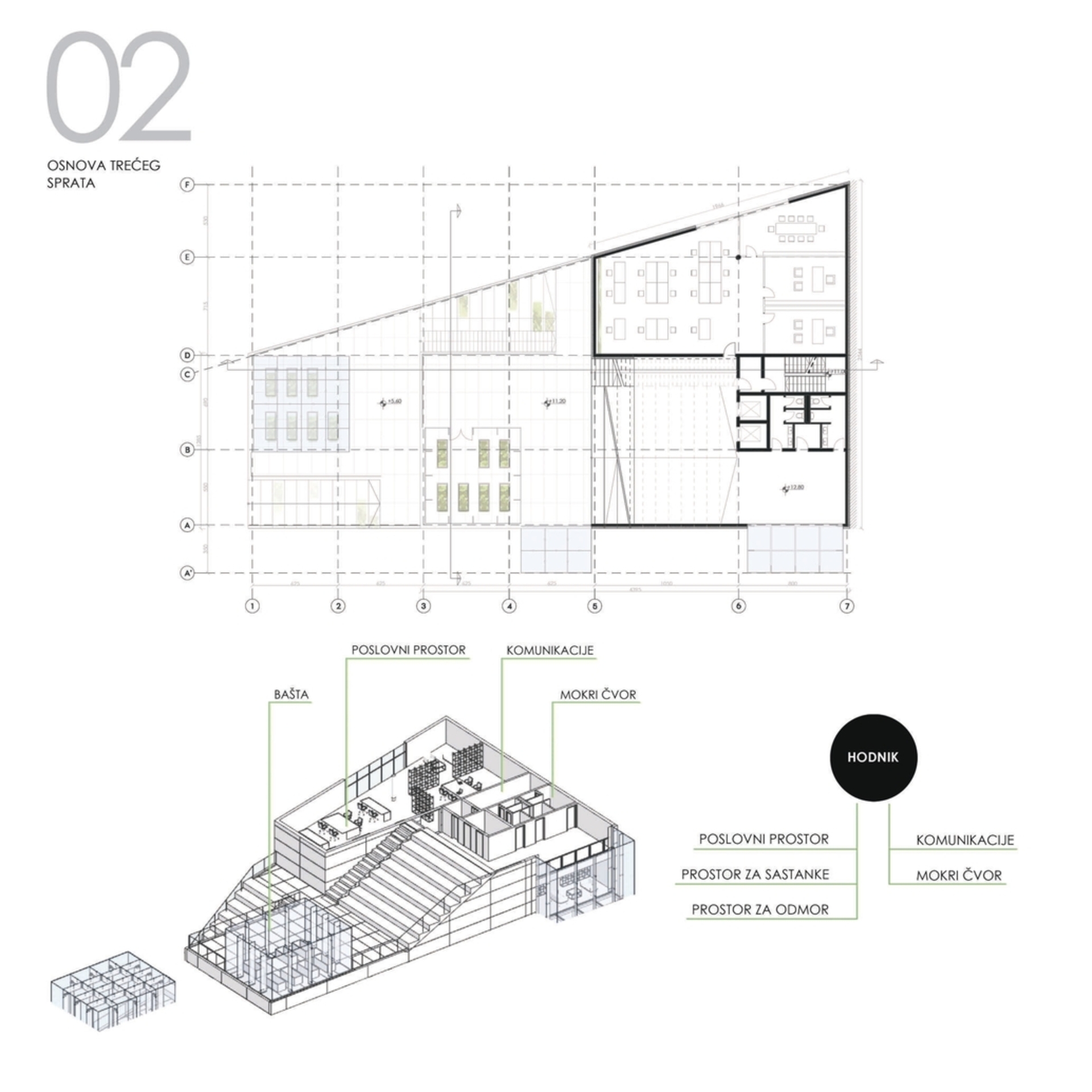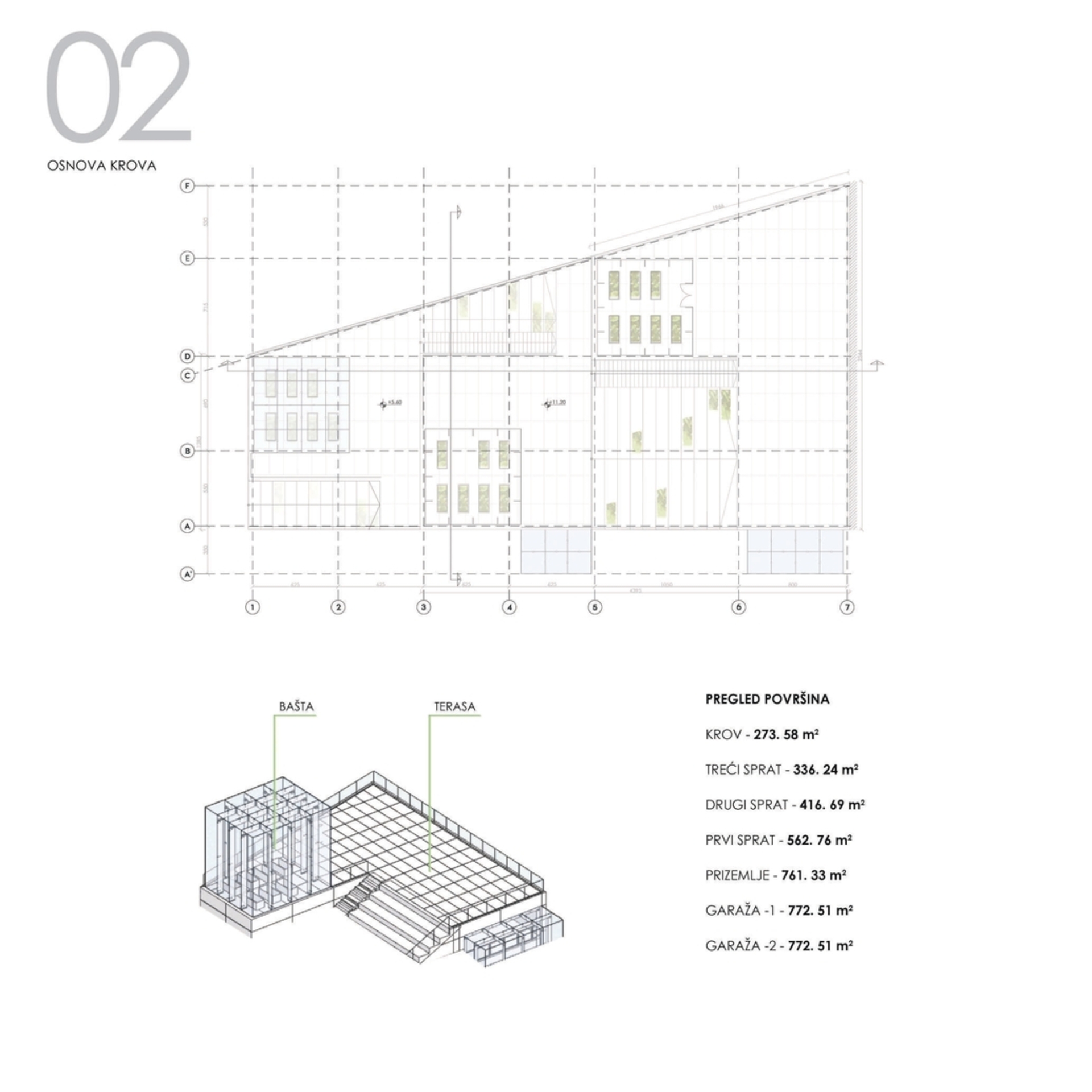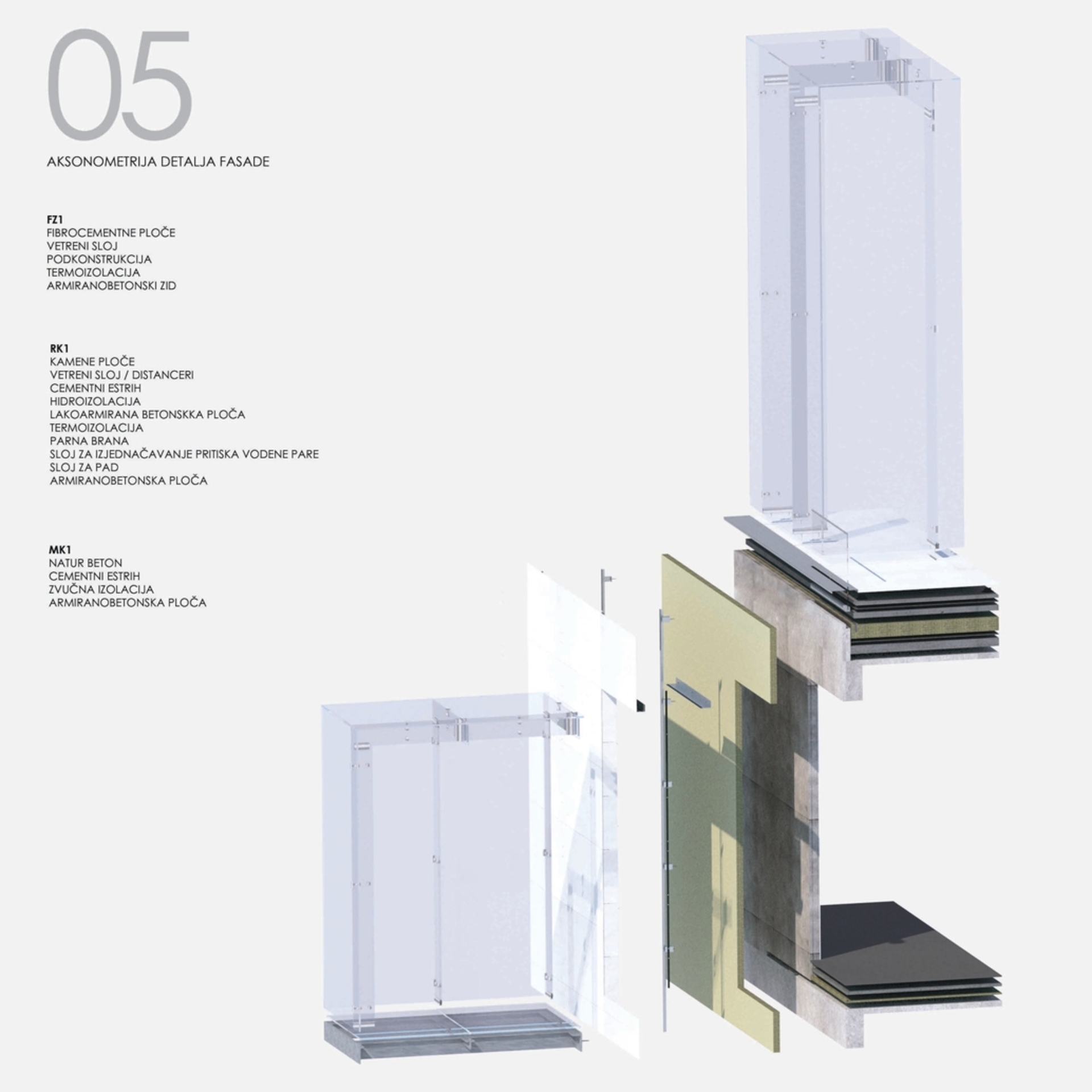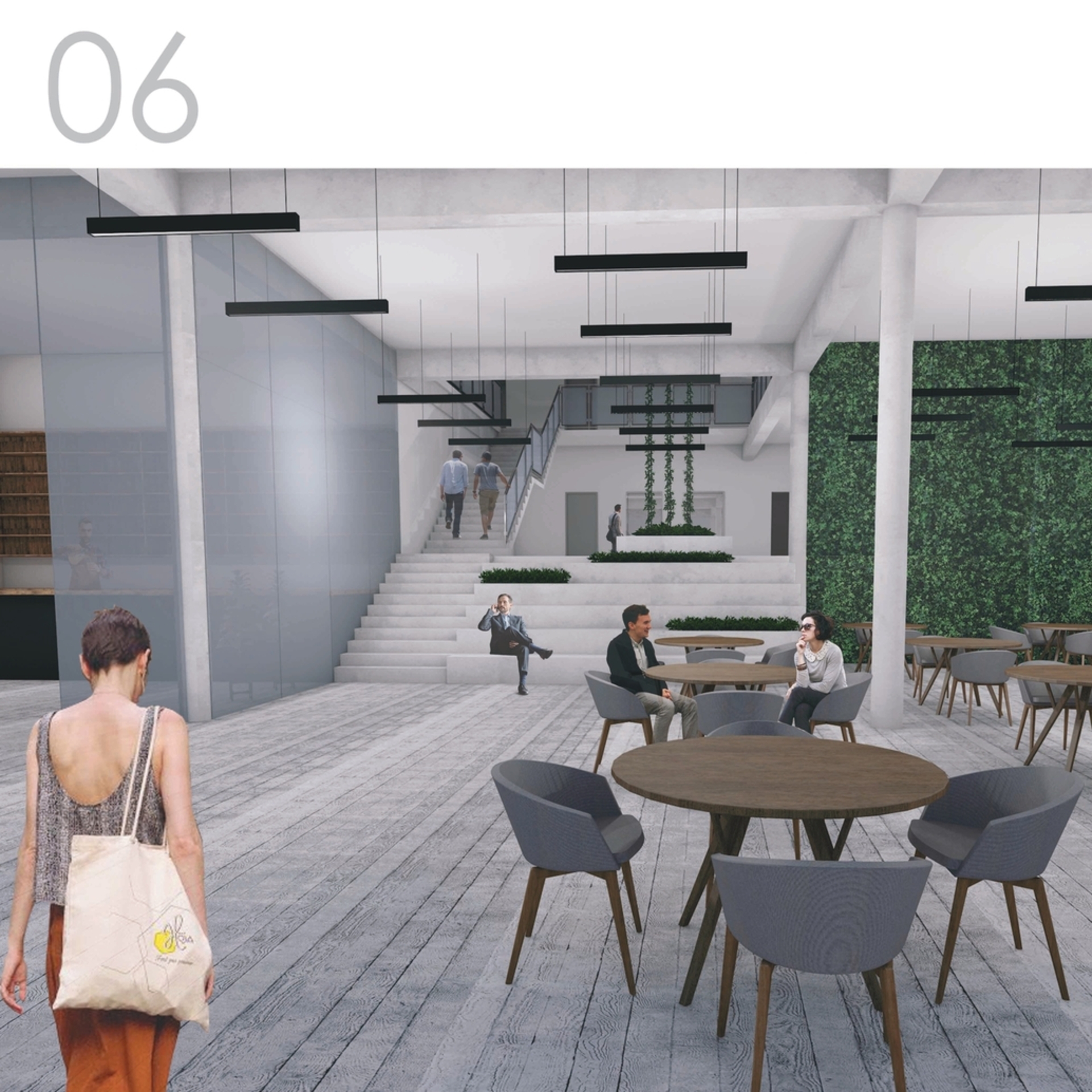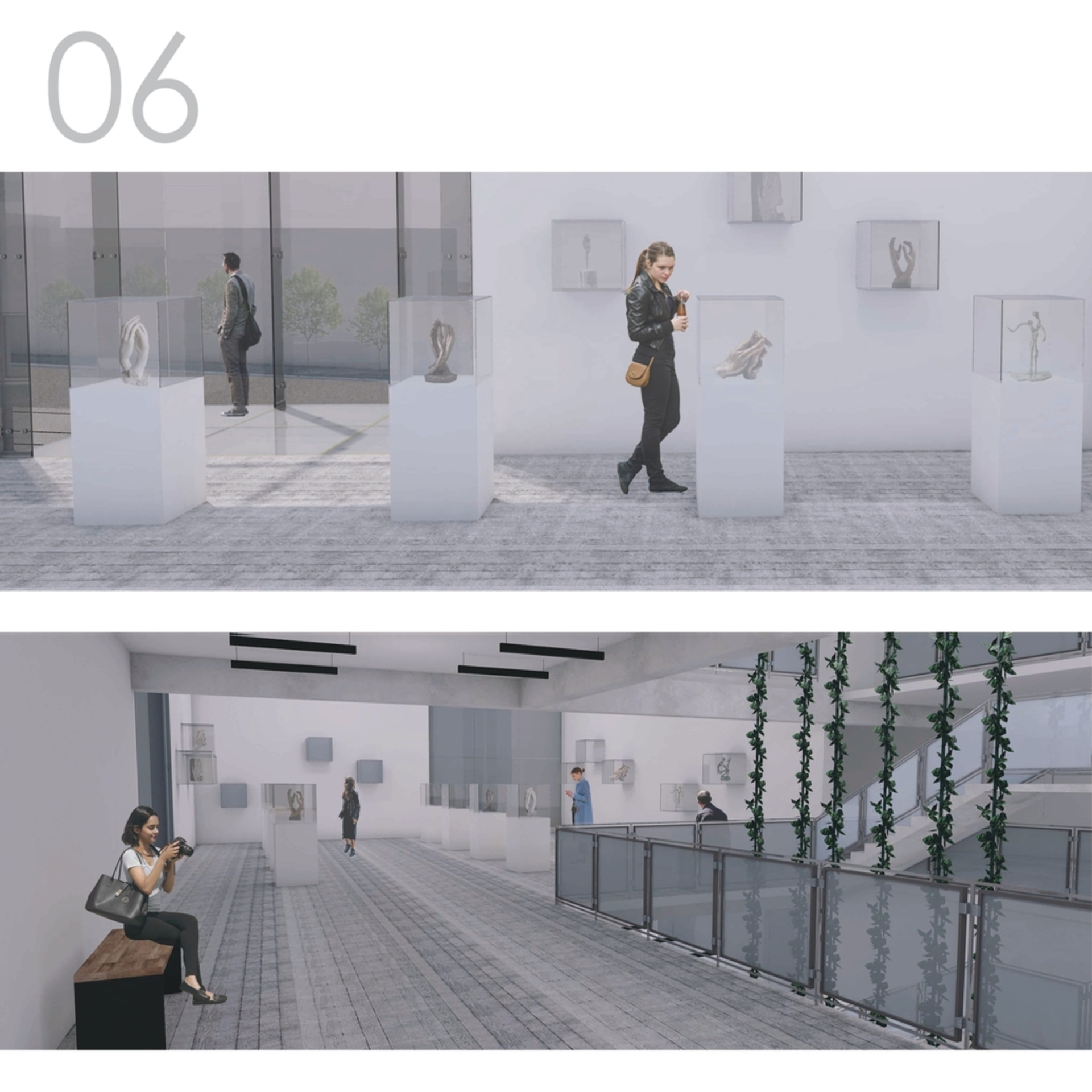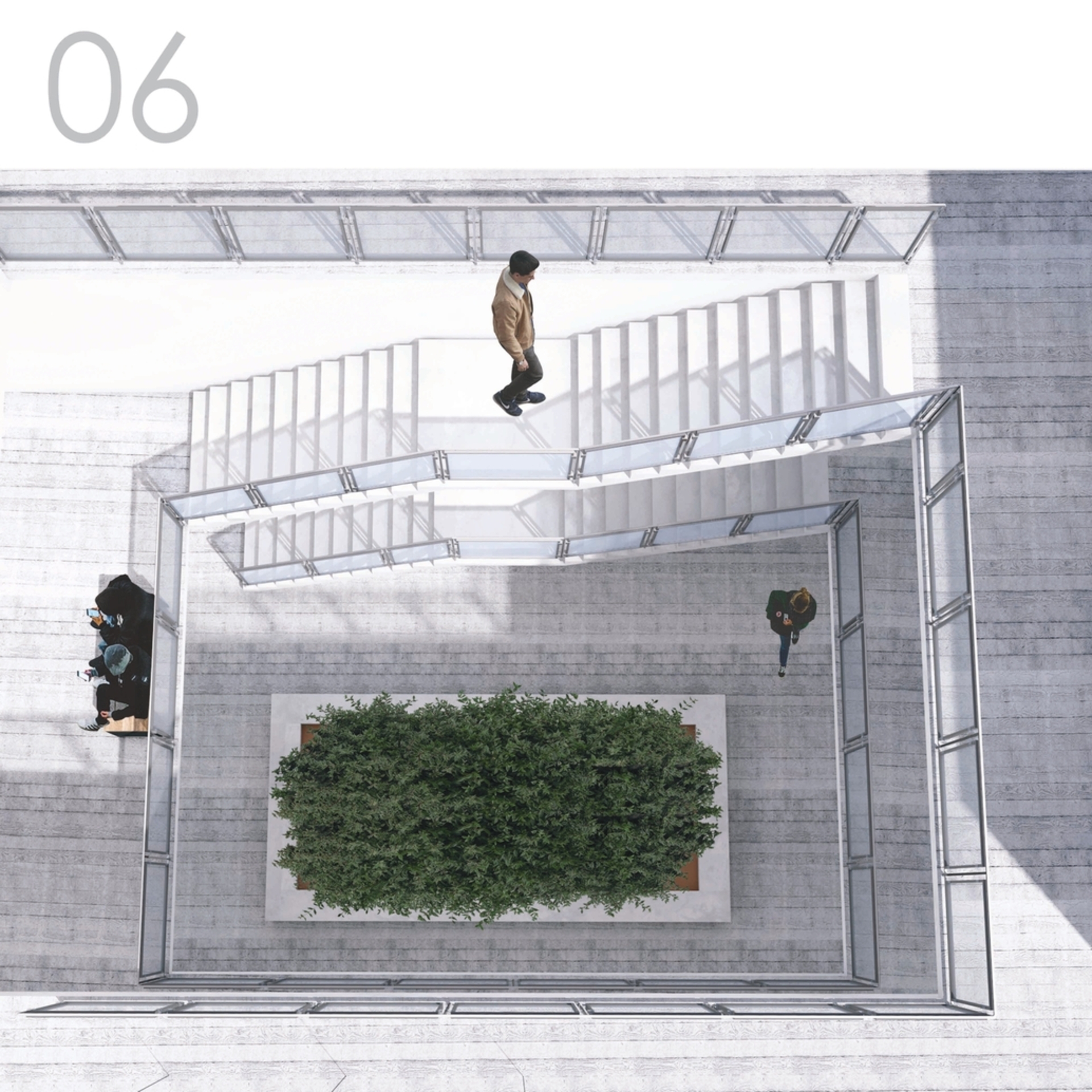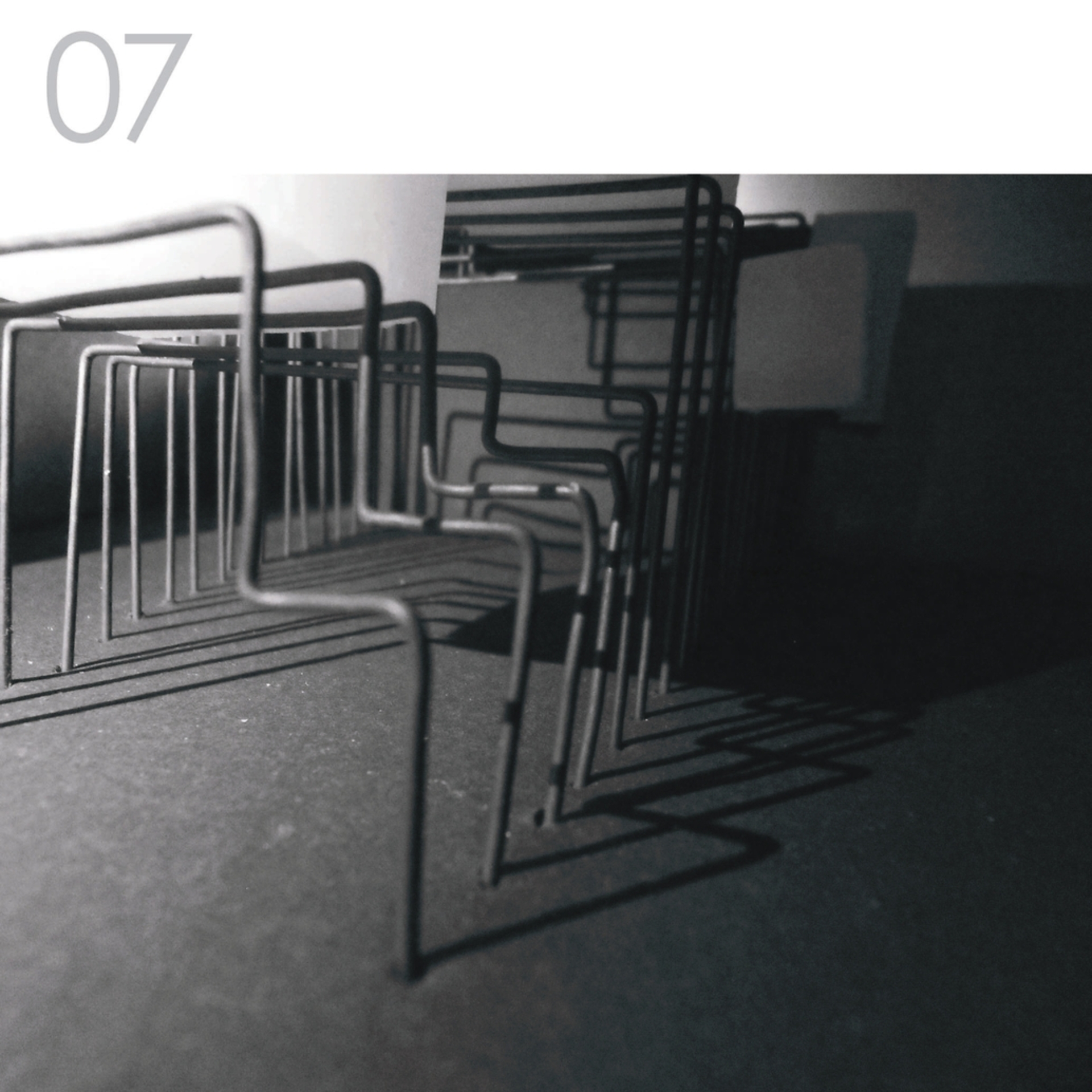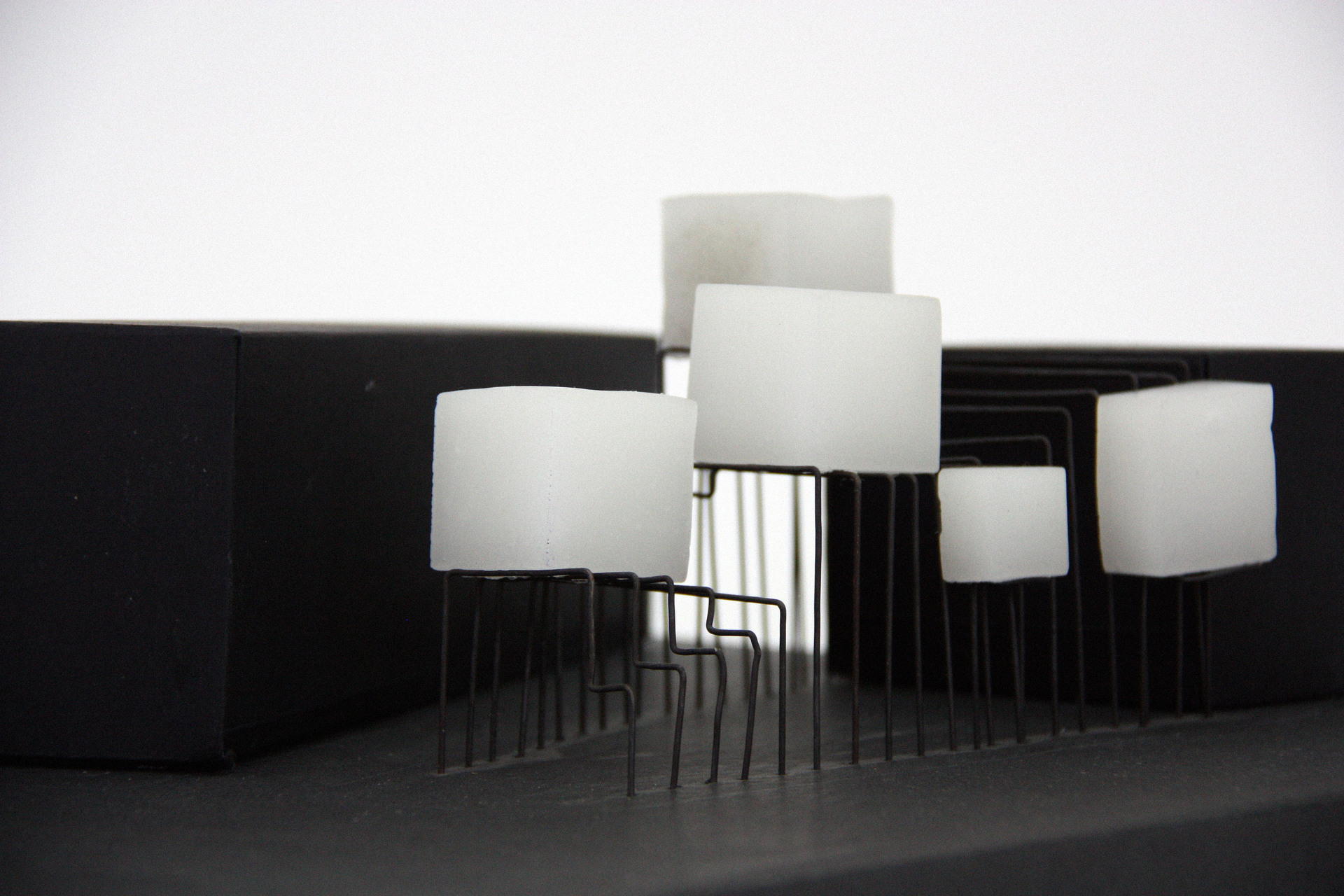Jana Nikolovski
HYBRID BUILDINGS
Introduction of students to professional and scientific matter and methodology of architectural design of ecologically justified buildings with the application of basic principles of energy efficiency. The design of a hybrid building serves as a program basis for adequate acquaintance of students with the elements of architectural and urban design, developing the ability to gather information and modern possibilities of building buildings with the correlation of technology and architecture. Students get acquainted with external and internal factors that affect the comfort of living in a particular architectural space, with special emphasis on work and educational units, optimization of energy efficiency of the building. Students will explore the socio-historical frameworks, architectural-urbanistic possibilities and energy potentials of the location for the realization of the hybrid facility project. The basis of the project task is the development of an architectural form and a facade cladding that will enable the integrative use of different forms of energy. Nature is an inexhaustible source of inspiration for energy efficiency and sustainability issues. The aim of the project is to develop a functionally necessary structure with solving the problem of energy optimization of the facade cladding, which is formally integrated into the architectural form. Active use of renewable energy sources in the facade cladding and the shape of the building enables energy optimization of the building. The project seeks innovation, technological progress and system integration of innovative energy subsystems in order to reduce primary energy consumption. Students get acquainted with the elements of planning and designing buildings for specific purposes using the basic principles of energy efficiency. The basis of the research is the analysis of different relationships and materialization of the building in search of presenting modern concepts in the architecture of the new millennium, as well as understanding the impact of extremely dynamic technological development. Through various forms of scientific methodology, students explore new forms of modern education that should be presented through a facility that is designed while reducing the consumption of conventional energy sources. The design of such structures and such concepts in the future aims at a systematic approach to a new generation of architectural objects defined by the influences of technology. Working on a hybrid business building project, students explore the basic elements of the function and relationship of architecture in the context of energy efficiency and modern technology.

